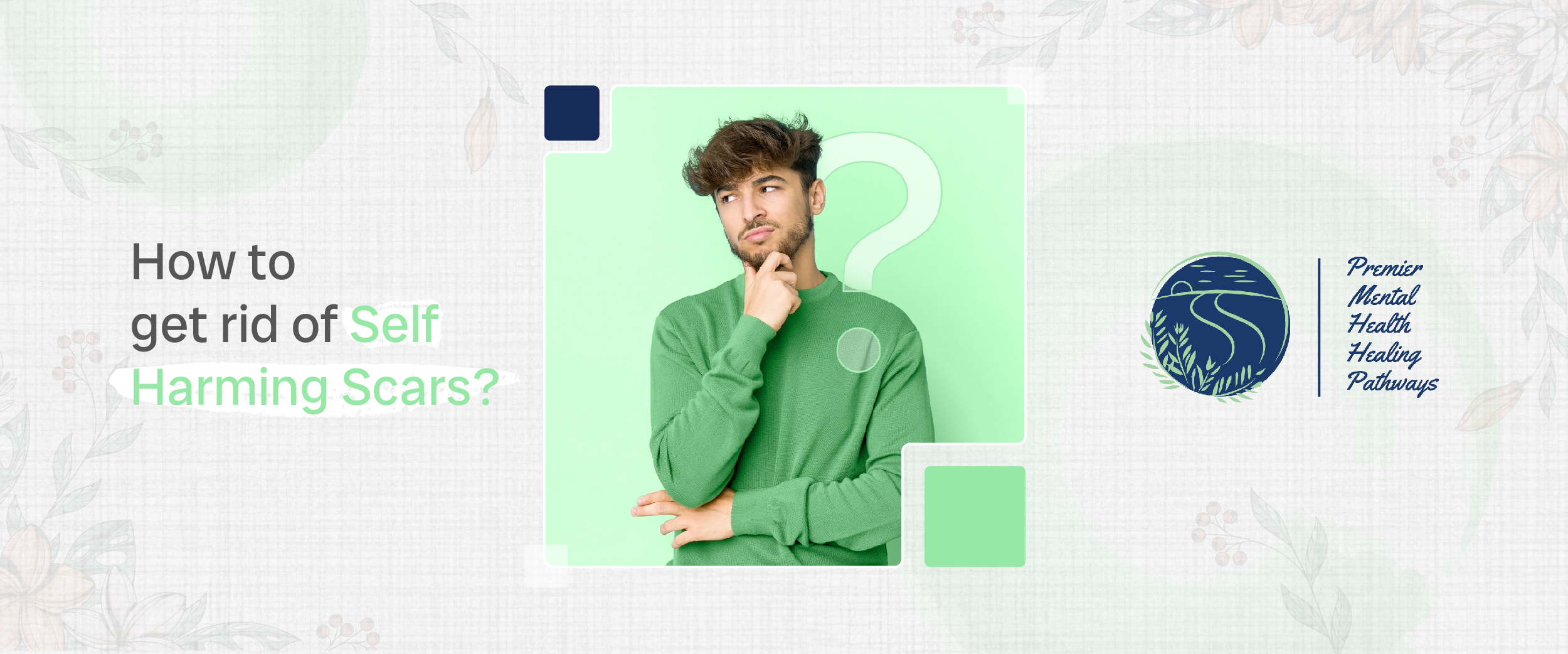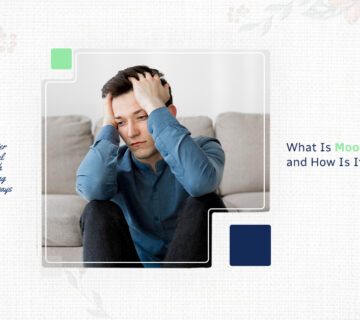Many people grapple with self harm, a hard, hurtful journey that often leaves marks. These marks, physical or emotional, are reminders of past battles. Many people feel the urge to face and overcome these reminders. How to get rid of self harming scars? Is this something many survivors ponder? Sure, addressing reasons for self harm is vital. But, exploring methods to lessen or wipe out these scars is key to recovery, too.
At Premier Mental Health Healing Pathways, we focus on holistic healing. We aim to help you remove self harming scars while supporting your mental health. Your path to emotional and physical recovery begins here. Contact us today.
Understanding Self Harm
Self harm, or non-suicidal self injury (NSSI), is a deliberate act. It inflicts pain to control intense emotions. It can involve cutting, burning, hitting, or other forms of physical harm. For many people, it is a way to articulate hard feelings or to seize control over their agony. Scars from this act remain visible.
When people harm themselves, they usually choose to cut. It often leaves visible scars. These scars can be upsetting. They may recall distressing memories and attract curiosity from others. That’s why it’s crucial to discover successful ways to lessen or get rid of these scars.
Preventing Further Self Harm
Before removing self harm scars, we must address the behaviors that caused them. Are you battling with self harm? Reach out to an expert. Therapy offers better ways to deal with stress and aids your road to healing.
Enrolling in an Inpatient Treatment Program
Ending self harm habits can be tough for some. If you’re struggling with this, consider joining an inpatient treatment program. These programs offer a secure place to get strong therapy and help. They can increase your power to fight the urge to self harm.
Self Harm Prevention Techniques
Learning new methods to handle stress and feelings is key to stopping self harm. Mindfulness, breath work, and diversion tactics can help with tough emotions. They provide ways to cope without self harm. Therapy can help you master these techniques and find options that suit you.
How to Get Rid of Self Harming Scars?
Eliminating Self Harming Scars can be tackled in several ways. You could try some over-the-counter options or even surgery. It hangs on the oldness and seriousness of your scars. What suits you best matters.
Over-the-Counter Treatments
For fresh or minor scars, try over-the-counter treatments. They might work. People usually start with these to reduce scar appearance.
Silicone Gel Sheets
Silicone gel sheets are often suggested for self harm scar care. The sheets keep your skin’s top layer moisturized. They slow collagen creation. This may make scars less noticeable. If you use these sheets often, scars may become flat and less visible over time.
Scar Creams and Gels
Lots of creams and gels are out there, aiming to fix scars. They often have ingredients like silicone and vitamin E. They also have things to keep your skin soft. It all helps make the scars look better, changing their color and feel. Consistent use makes them less visible and helps your skin recover more evenly.
Medical and Surgical Treatments for Self Harm Scars
If you’ve got deep or aged scars, over-the-counter treatments may not cut it. In such cases, you may need surgery or treatments to reduce the scars’ visibility.
Vascular Lasers
Vascular lasers focus on minimizing the redness and discoloration in scars. The process impacts the blood vessels under the scar, making it less visible. It’s not a complete scar removal solution. But, it does improve the scar’s appearance.
Fractional Lasers
Fractional lasers are a common choice for elevated scars. They create small injuries in the scar tissue, which prompt the skin to make fresh collagen. This step integrates the scar with the surrounding skin for a natural look.
Thin Skin Grafting
For severe or broad scars, a technique called thin skin grafting may be needed. This method uses a thin skin layer from a different body part to overlay on the scarred area. Though it’s a bit more of a deep dive, it works wonders in improving the look of serious scars.
Intralesional Steroid Injections
Steroid shots might help smooth out bumpy scars. They work by calming swelling and dissolving extra collagen. This makes the scars better match the surrounding skin. People often use this method with others, such as laser treatment, for better results.
How to Cover Self Harm Scars?
Not quite set for medical procedures, or do your scars still need time? Wondering how to conceal self harm scars? Various choices exist, each matching your unique needs and taste.
Using Skin Camouflage
Camouflage for the skin is designed with the purpose of masking scars and flaws. These items are vibrant. They provide lasting cover. Their water-resistant nature, coupled with sun defense, makes them perfect for daily wear. If you want to hide your scars, try skin camouflage. It’s a good choice for a special occasion or trip.
Other Ways to Cover Your Scars
There are other ways to conceal your scars besides using skin camouflage. Things like clothing or accessories can help. You might consider long sleeves, bracelets, or even tattoos. When your scars are healing, avoid things that could irritate your skin or delay healing.
How Long Do Self Harm Scars Last?
Many ask, how long do self harm scars last? It’s not the same for everyone, it depends on how severe the scar is and its care. Newer scars might be simpler to handle. With the right care, they could become much less visible in months or up to a year. Dealing with older scars is tougher. They might take more time to reduce in appearance; yet, with patience, they too can seem less over time.
Will Self Harm Scars Go Away Completely?
Scars from self harm can fade, but never completely disappear naturally. The chance of scars disappearing wholly is low. Using the right methods makes scars less noticeable. Those aiming to improve find their scars reduced but do not vanish. As time passes with good care, many find their scars are not as noticeable. Thus, they no longer serve as a steady signal of old hardships.
How to Fade Self Harm Scars? Practical Tips
Looking for ways to lighten self harm scars? You can use certain handy actions along with the previously discussed therapies.
- Keep the Area Moisturized: Keeping scars moist aids healing and smoothens skin. Seek products with silicone, vitamin E, or aloe vera.
- Protect Scars from Sun Exposure: UV rays can intensify scars, making them stand out. Use sunscreen to shield scars daily or wear protective outdoor clothing.
- Avoid Picking at Scabs: If your wounds are still mending, resist the urge to scratch at scabs. This can cause more scarring and slow the recovery process.
Dealing with Deep Self Harm Scars
If you’ve got deep self harm scars, you might need focused care. Often, deep scars need a mix of therapies. This can include lasers, skin grafting, and steroid shots. Chatting with a skin doctor about choices and making a treatment plan for you is key.
How to Treat Self Harm Wounds to Prevent Scarring?
To minimize scarring, proper care of self harm wounds is crucial. If you have such injuries, clean them. Then, apply a healing ointment. Keeping the wound moist and covered lessens the risk of scarring. If the wound is deep or the bleeding continues, seek medical attention right away.
Conclusion
Discovering methods to eliminate self harming scars is a crucial stage in healing. Scars might not disappear. However, many treatments can reduce their appearance. You can choose over-the-counter treatments, and medical procedures, or just hide your scars.
Focus on your health and recovery first. Remember, you have support and you’re not alone.
FAQS
How to remove self harm scars from arms?
Self harm often leaves scars on the arms, a spot many ask about hiding. Several scar solutions work well on arm scars. They include silicone gel sheets, scar creams, and laser treatments. Also, clothes or accessories can help if you’re uneasy about being visible.
How long do self harm scars last?
Scars from self harm might stick around for a short few months or longer years. It all hinges on the wound’s depth, the care given, and each person’s skin recovery.






No comment